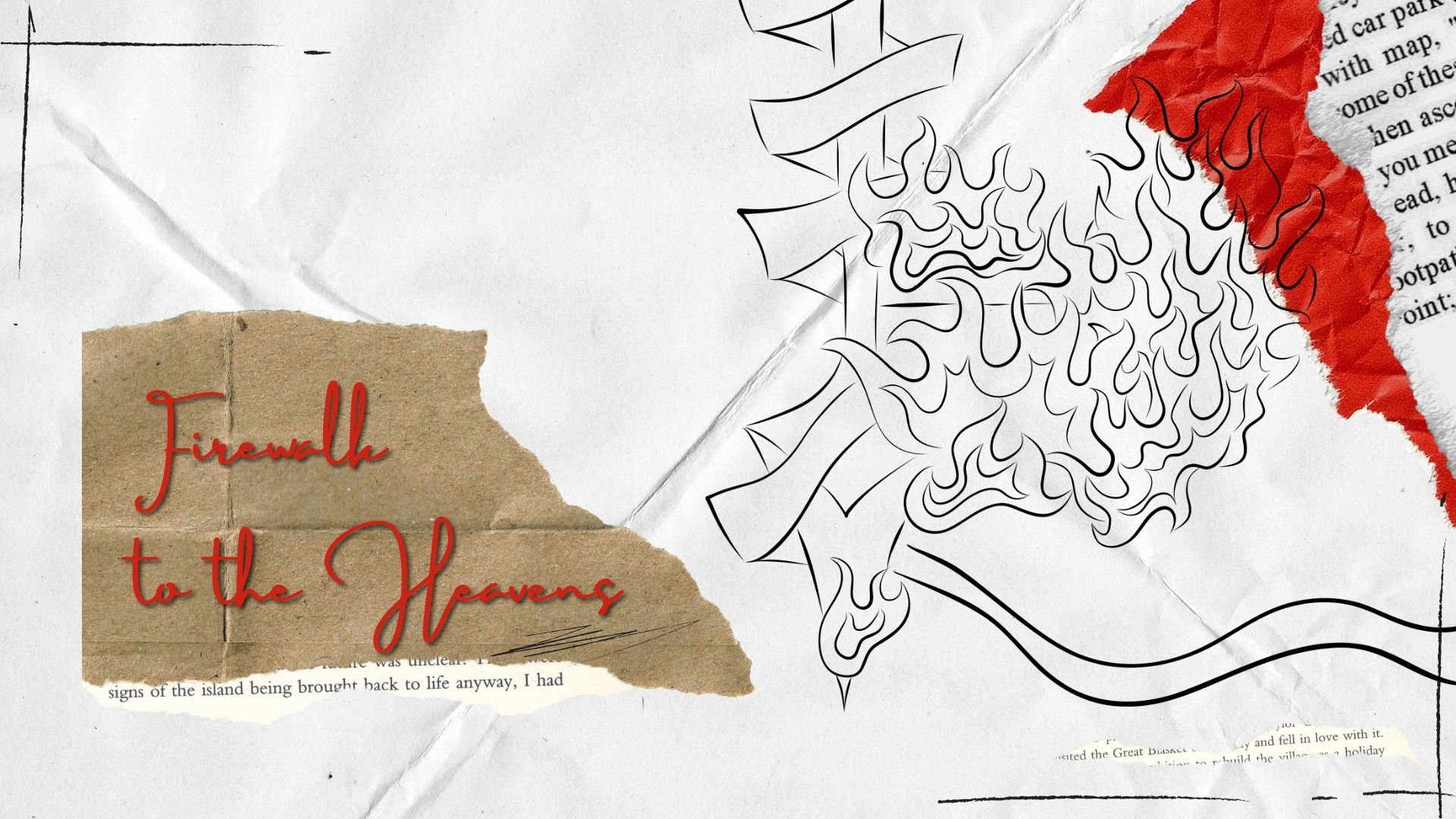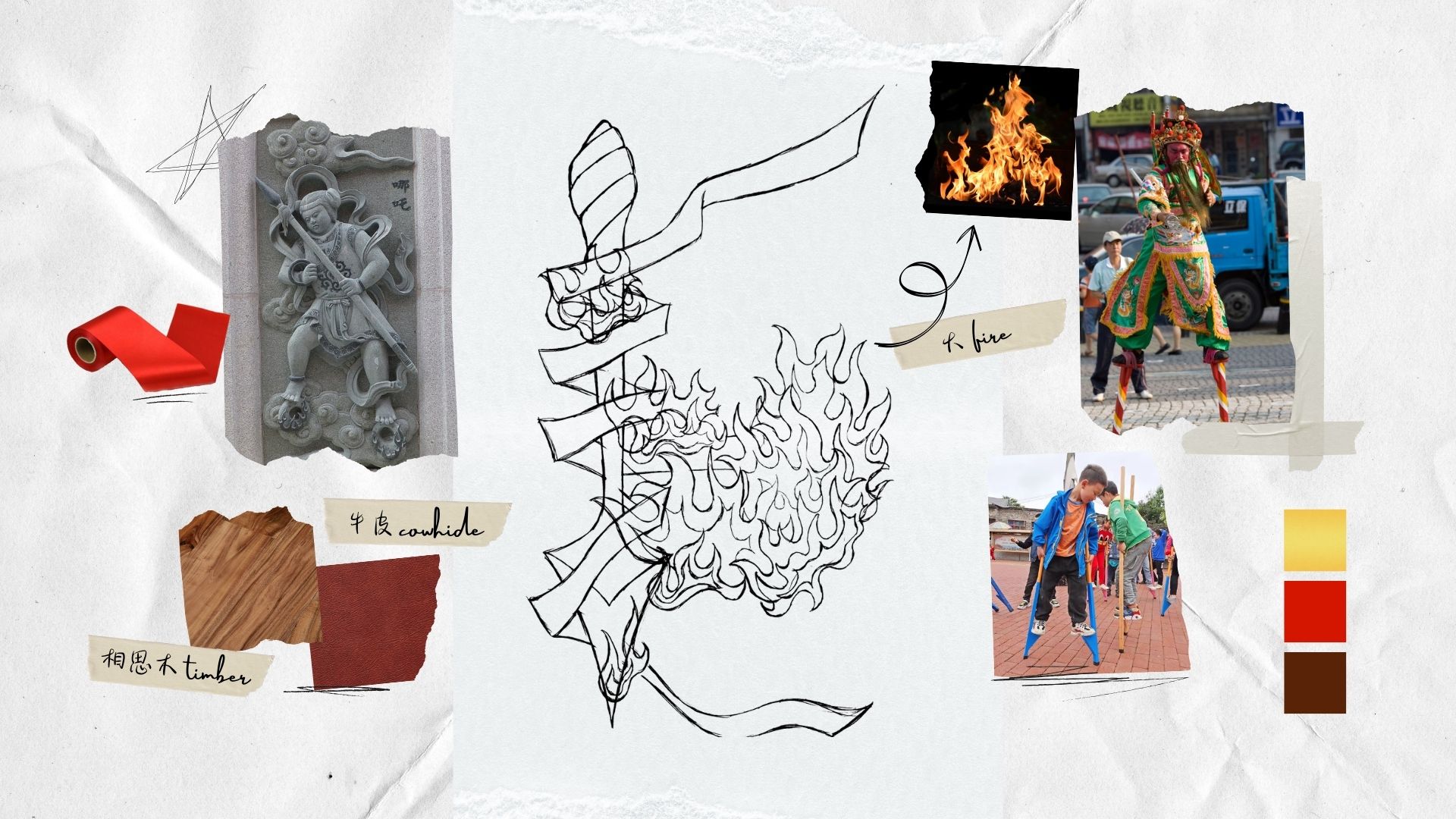Firewalk to the Heavens
Category: Footwear
本作品從傳統神話人物哪吒中汲取靈感,融合民間高蹺藝術的文化意境,創造出一對富有象徵意義和視覺強度的藝術高蹺。 高蹺最初根至於古老的宗教儀式、民間表演和實際的日常活動,現已演變成為傳統節日和慶祝活動的基本元素。它們通常被歸類為「文高」或「武高蹺」,代表著優雅和力量的雙重文化精神。 作為正義的強大象徵,哪吒因其標誌性的形象而被人們銘記:站在風火輪上,揮舞著火尖槍,披著被稱為“混天綾”的紅絲帶。哪吒受到許多大型運輸司機(如卡車、計程車和旅遊巴士運營商)的尊敬,經常被尊為守護神,寓意保佑旅途安全。借鑒這種文化聯繫,這件作品將哪吒的經典圖案融入高蹺設計中,將傳統工藝與精神象徵相結合,展現現代詮釋。 高蹺以雕刻的木材為基礎結構,以皮革拼接和細緻的縫線為特色,讓人聯想到風火輪的能量、混天綾的流淌優雅以及火尖槍的兇猛存在。整體設計傳遞了強大的文化共鳴和視覺衝擊力,表達了一場跨越代際的美學對話,將神話、傳統和現代藝術融為一體。 This work draws inspiration from the traditional mythological figure Nezha and integrates the cultural essence of folk stilt art to create a pair of artistic stilts rich in symbolism and visual intensity. Stilts have their roots in ancient religious rituals, folk performances, and practical daily activities. Over time, they have evolved into essential elements of traditional festivals and celebratory events. They are often categorized as "civil stilts" or "martial stilts," representing the dual cultural spirit of elegance and strength. As a powerful symbol of justice, Nezha is remembered for his iconic image: standing on flaming wheels (Fenghuolun), wielding a fire-tipped spear, and wearing a flowing red ribbon known as the "Huntian Ling." Nezha is revered by many large-vehicle drivers—such as truckers, taxi drivers, and tour bus operators—and is often honored as a guardian deity symbolizing safe journeys. Drawing from this cultural connection, this piece incorporates Nezha’s classic motifs into the design of the stilts, blending traditional craftsmanship with spiritual symbolism to present a modern interpretation. The stilts are constructed from carved wood, featuring leather patchwork and meticulous stitching that evoke the energy of the flaming wheels, the flowing grace of the Huntian Ling, and the fierce presence of the fire-tipped spear. The overall design conveys a strong cultural resonance and visual impact, expressing an intergenerational aesthetic dialogue that fuses mythology, tradition, and contemporary art.



 Copy URL
Copy URL
 Login to Like
Login to Like 